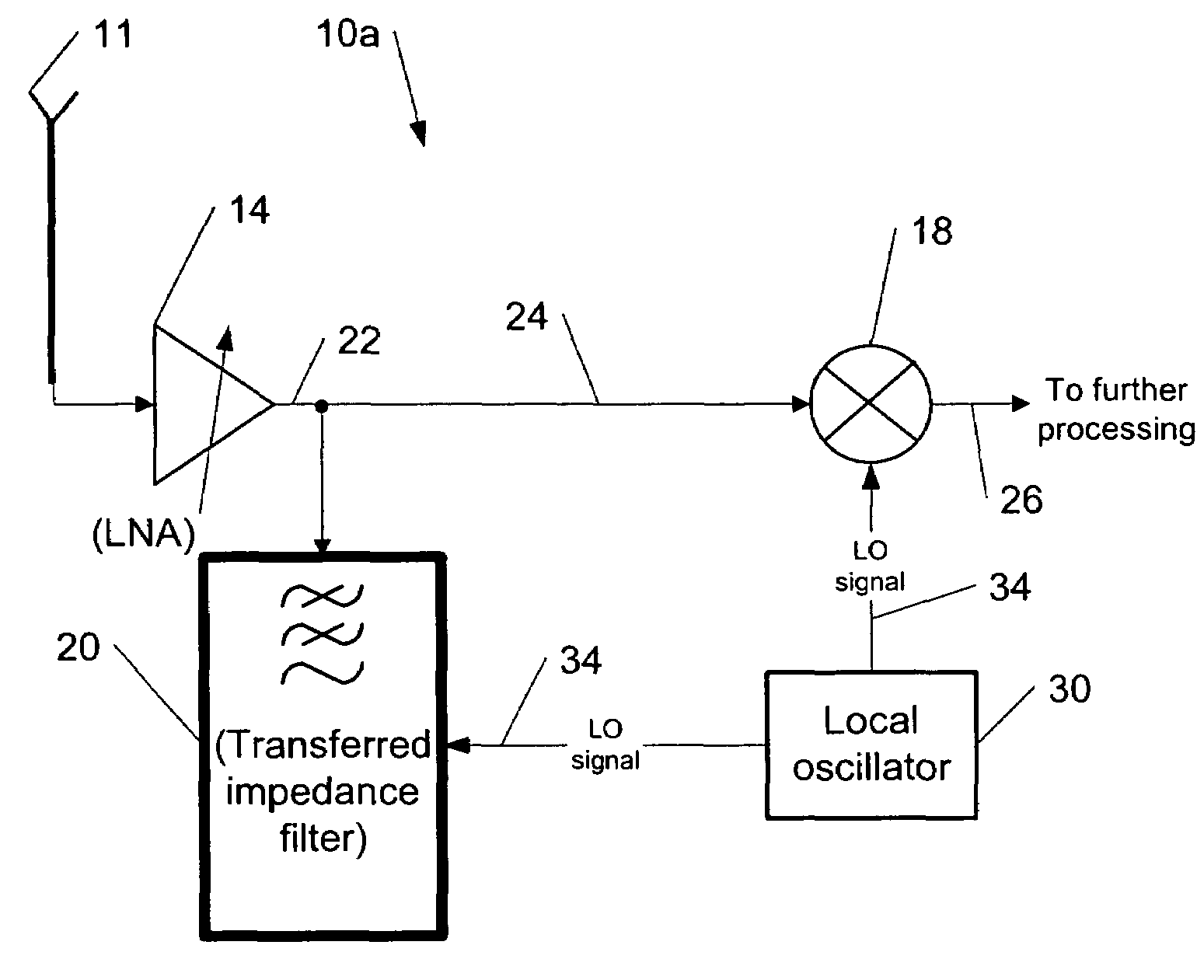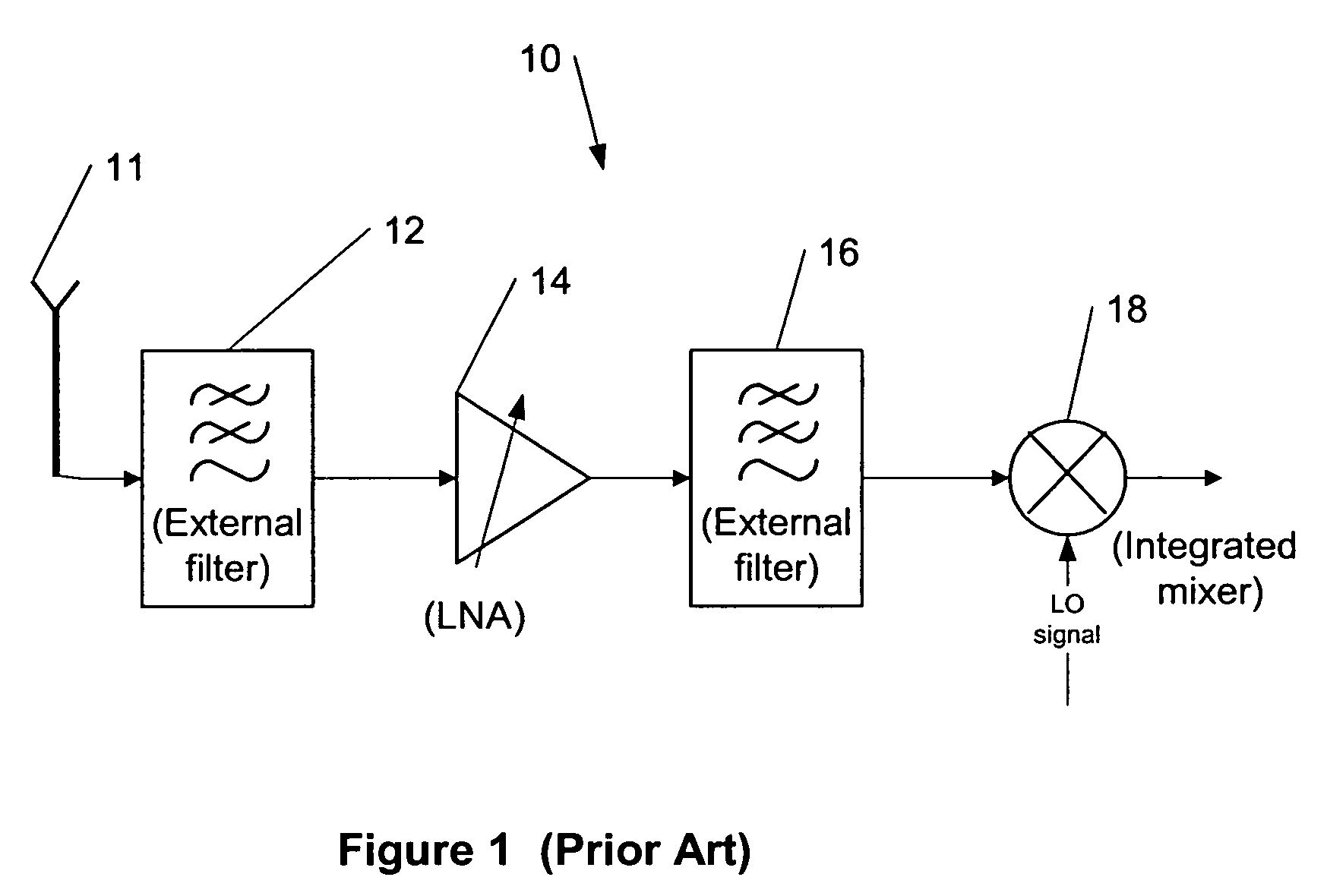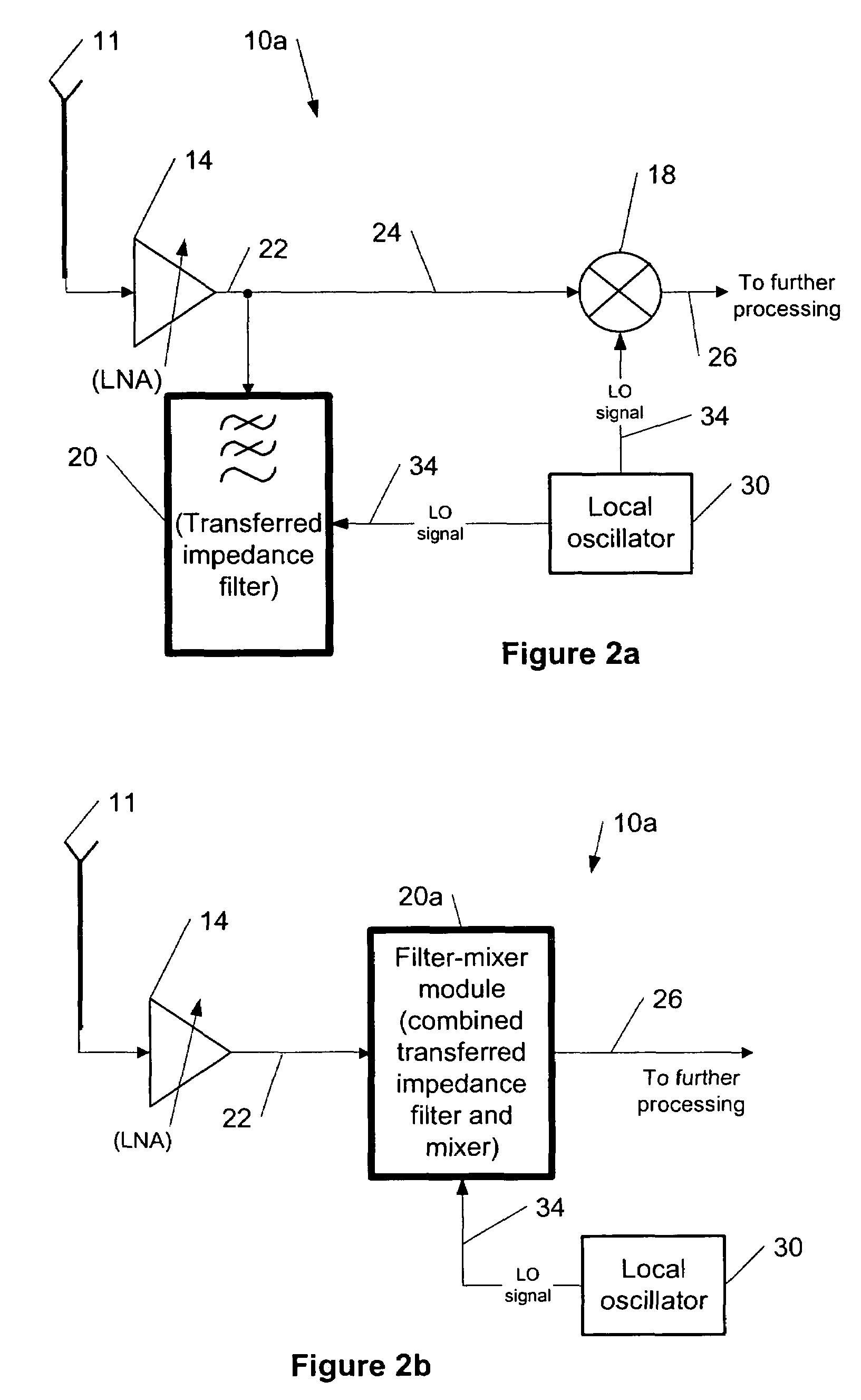Transferred-impedance filtering in RF receivers
a technology of transmitting impedance filtering and receiver, which is applied in the field of communication systems, can solve the problems of large pwbs, high cost of components, and inability to integrate with a standard cmos or bicmos process
- Summary
- Abstract
- Description
- Claims
- Application Information
AI Technical Summary
Benefits of technology
Problems solved by technology
Method used
Image
Examples
Embodiment Construction
[0035]The present invention provides a method for using transferred-impedance filtering in RF (radio frequency) receivers (e.g., inside of a mobile communication deice), wherein said filtering can be done with MOS-switches transferring impedance of a regular RC or RCL circuit to RF frequency filtering inside an RFIC (radio frequency integrated circuit).
[0036]FIG. 1 shows an example of a block diagram of a front end of an RF receiver 10, according to the prior art. An antenna 11 receives a radio frequency signal and converts it to an electrical domain. Then the signal is filtered first using an external filter 12, amplified using a low noise amplifier (LNA) 14 and filtered again using an external filter 16 before it is provided to a mixer 18 as a part of a normal algorithm, according to the prior art.
[0037]FIGS. 2a and 2b show examples among others of block diagrams of a front end of RF receivers 10a and 10b, respectively, according to the present invention. Compared to the prior art...
PUM
 Login to View More
Login to View More Abstract
Description
Claims
Application Information
 Login to View More
Login to View More - R&D
- Intellectual Property
- Life Sciences
- Materials
- Tech Scout
- Unparalleled Data Quality
- Higher Quality Content
- 60% Fewer Hallucinations
Browse by: Latest US Patents, China's latest patents, Technical Efficacy Thesaurus, Application Domain, Technology Topic, Popular Technical Reports.
© 2025 PatSnap. All rights reserved.Legal|Privacy policy|Modern Slavery Act Transparency Statement|Sitemap|About US| Contact US: help@patsnap.com



